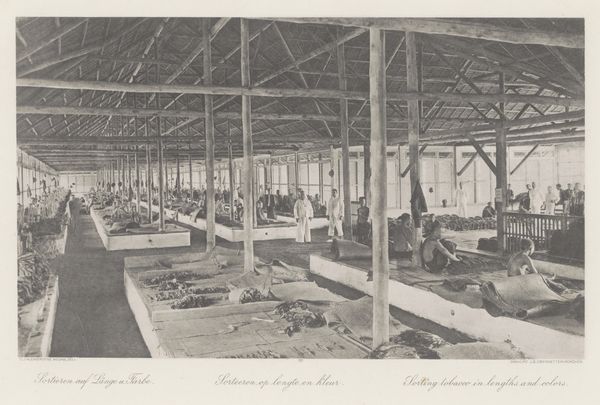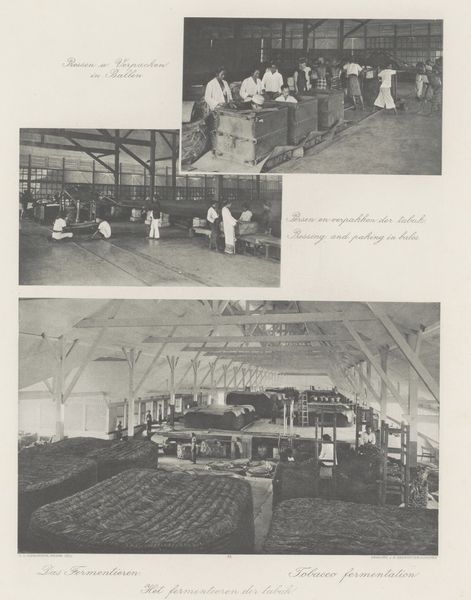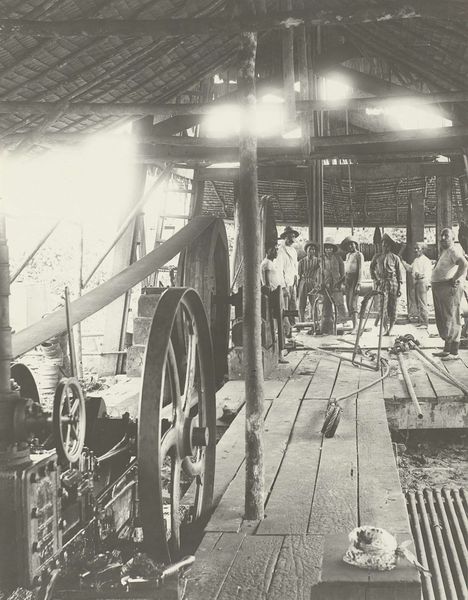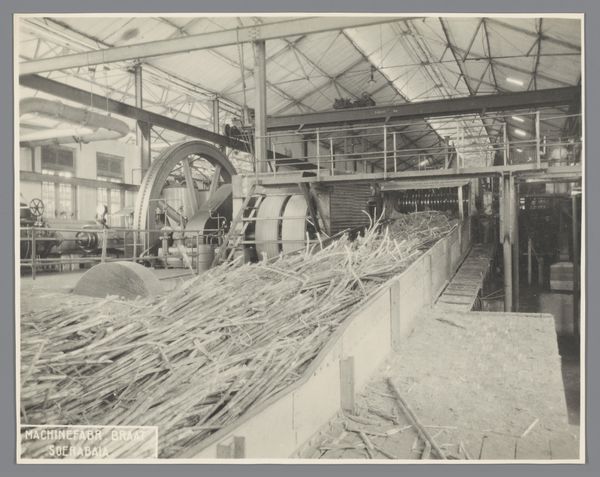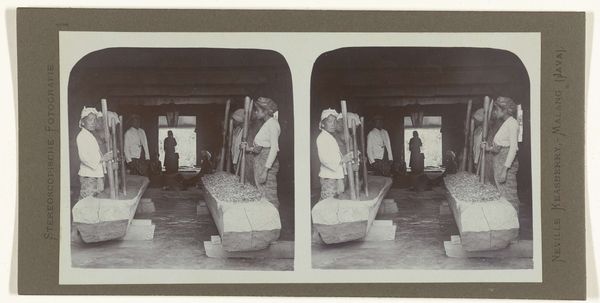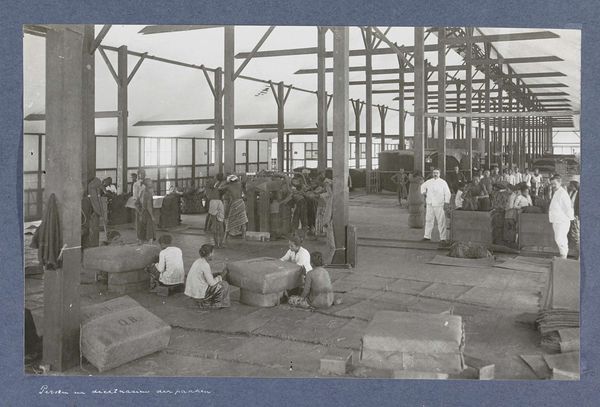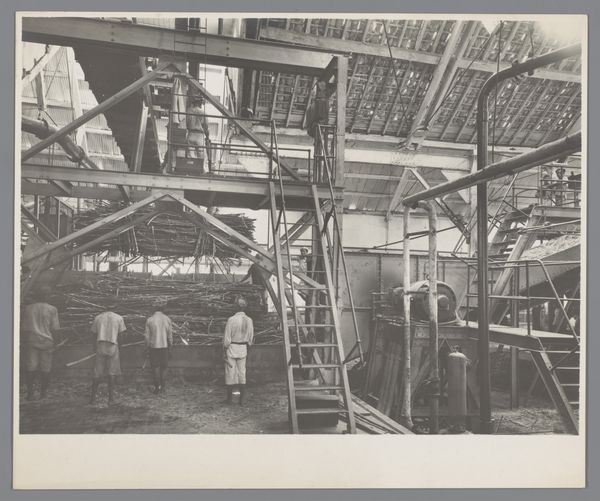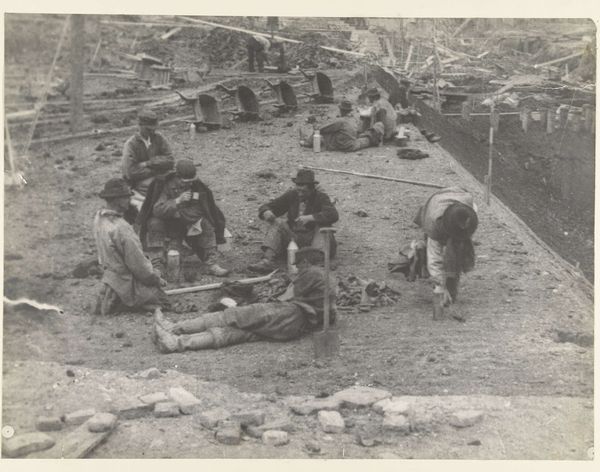
photography
#
landscape
#
archive photography
#
photography
#
realism
Dimensions: height 174 mm, width 236 mm
Copyright: Rijks Museum: Open Domain
Curator: Looking at this vintage photograph entitled "Molenstation Goenoengsari," captured in September 1926, one immediately notices the striking linear perspective guiding the viewer through the scene. Editor: Indeed. What I immediately pick up on is the texture and feel of manual labor; the coarse surfaces, raw materials, and visible construction techniques all shout of the process and effort in that landscape. Curator: Exactly! The arrangement of light and shadow created by the bamboo roof and wooden pillars segments the image into geometric planes. Do you see how the vertical elements punctuate the composition? They direct the eye. Editor: Certainly. However, they also function to emphasize the very process of creating shade and shelter. Look at the raw, unprocessed nature of these materials! The entire structure speaks to resourcefulness. How labor-intensive the act of procuring these materials would have been. The whole scene points to how vital this ‘station’ was. Curator: The subdued tonal range emphasizes structure— the pillars create almost an endless colonnade. One feels transported into this industrial space, where function dictates form so precisely. Editor: Absolutely. And isn't the framing itself noteworthy? That dark border suggests this photograph, and maybe others like it, existed as documents; perhaps even part of a wider survey to highlight regional output and commerce. Look at those vats, I wager, used to produce goods within this Molenstation. It gives depth to that scene. Curator: Agreed; the meticulous record, yet in its raw presentation. Considering realism in landscape in the ‘20s, perhaps it is saying less about beauty and more about existence? Editor: A fitting assessment, one must say. It does lead us to think about how labor and materials can dictate how our very lives and towns are structured. Curator: It offers us, indeed, the possibility to contemplate a period far from our own and reminds us how things looked so very differently at a certain time. Editor: Precisely! Thank you for helping illuminate what really counts, and making sure that the process, and all the materiality inherent within it, remain top of mind.
Comments
No comments
Be the first to comment and join the conversation on the ultimate creative platform.
